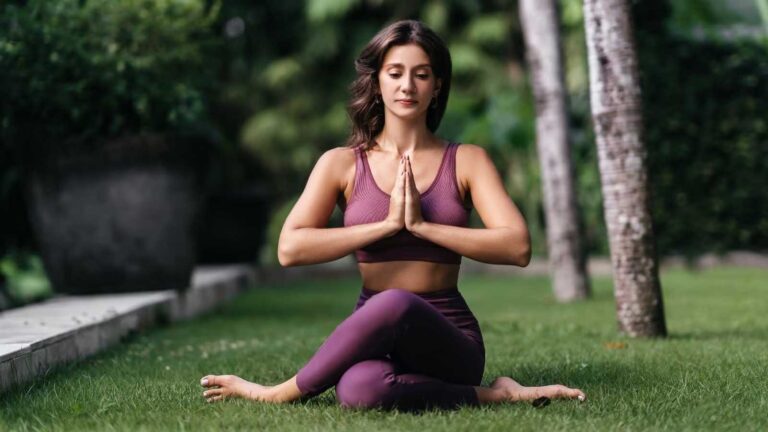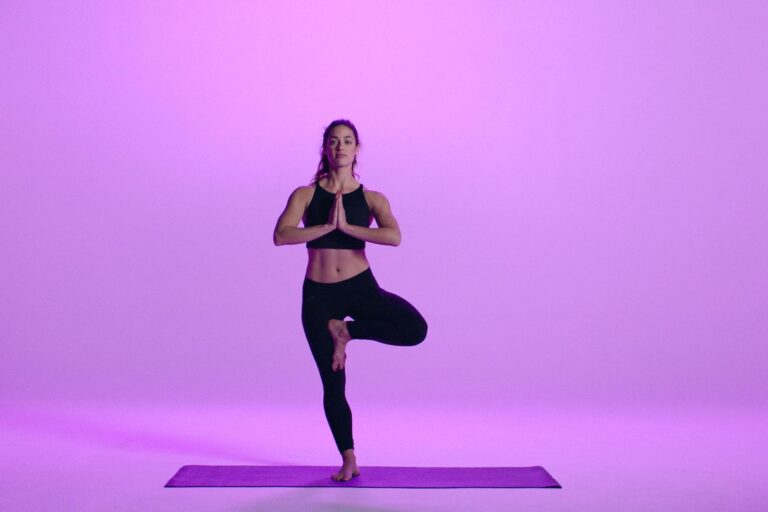Yoga is one of the best ways to keep in shape and active. In addition to many other things, it can be used to improve posture, flexibility, and strength. It’s a way of life that promotes mental and emotional well-being as well as enjoyable physical activity.
Yoga has been a popular form of exercise for a long time, and for good reason, it’s a low-impact, all-encompassing workout that almost anyone can do, and it helps to calm the mind and release tension. Because the postures are easily adaptable, you can do them regardless of your age, degree of fitness, or physical limitations. Yoga might be the only exercise you do, depending on the classes you take and how challenging they are. Depending on the format and length of the class, it may or may not be counted towards your daily need for physical activity.

IS YOGA SUFFICIENT AS YOUR SOLE FORM OF PHYSICAL ACTIVITY?
Many people believe that only those who engage in high-intensity exercises like jogging and weightlifting achieve effects from their workouts. The truth is that there are a lot of other forms of exercise, including low-impact ones like yoga and walking, that are very beneficial for the body. To guarantee that you strengthen and move the greatest number of muscles and joints in your body, it is generally advisable to engage in more than one sort of exercise.
The four types of fitness that help to bolster health are :
Improves flexibility
As we become older, the majority of people’s muscles shorten and stiffen. The tissue that connects bones and muscles is called a tendon. The reduced range of motion restricts the natural range of motion in your knees, shoulders, elbows, spine, and other joints. A higher risk of discomfort and damage may also be associated with a lack of flexibility. For example, if your hamstrings are tight, your pelvis will drop, which will put a strain on your lower back. In general, tight muscles increase your risk of suddenly moving beyond of your safe range of motion and injuring your ligaments, tendons, and muscles.
Improves muscular strength
Both muscle strength (how much weight you can lift) and muscle endurance are meant by this (how long you can lift it). As we age, we all lose muscle mass if we don’t exercise, which can eventually lead to weakness, loss of balance, and coordination. Every pound of muscle burns about 7 calories per day, making it clear that muscle plays a significant role in controlling your metabolism.
On specialized apparatus that resembles a gym exercise machine but has sensors that measure the amount of force your muscles produce when they contract, researchers evaluate the strength and endurance of your muscles in a lab setting.
Improves cardiovascular health
This relates to the health of your blood vessels, heart, and lungs. Your risk for a variety of ailments like heart disease, diabetes, and cancer decreases with improved cardiorespiratory fitness and stamina.
Your VO2 max (maximal oxygen uptake), a technical phrase that describes how effectively oxygen enters your lungs, travels into your circulation, and is utilized by your muscles, is a measure of how far you can go before feeling exhausted or winded. Your body consumes and transports oxygen more effectively as you get fitter, increasing your VO2 max as a result.

Physique composition
The percentage of your body that is made up of fat as opposed to muscle, bone, organs, and other non-fat tissues is referred to as your body composition. Too much fat and too little muscle increases your risk for disease and reduces the efficiency of your movement, despite criticism from some who claim that it is possible to have a larger physique and still be fit in recent years.
It’s important to resist being weighed down by what you “should” do in terms of fitness. Just like anything else in life, be sure you’re doing what you want and that it raises your standard of living as a whole. For consultation visit Specialty Care Clinics. Schedule an appointment at (469) 545-9983.
